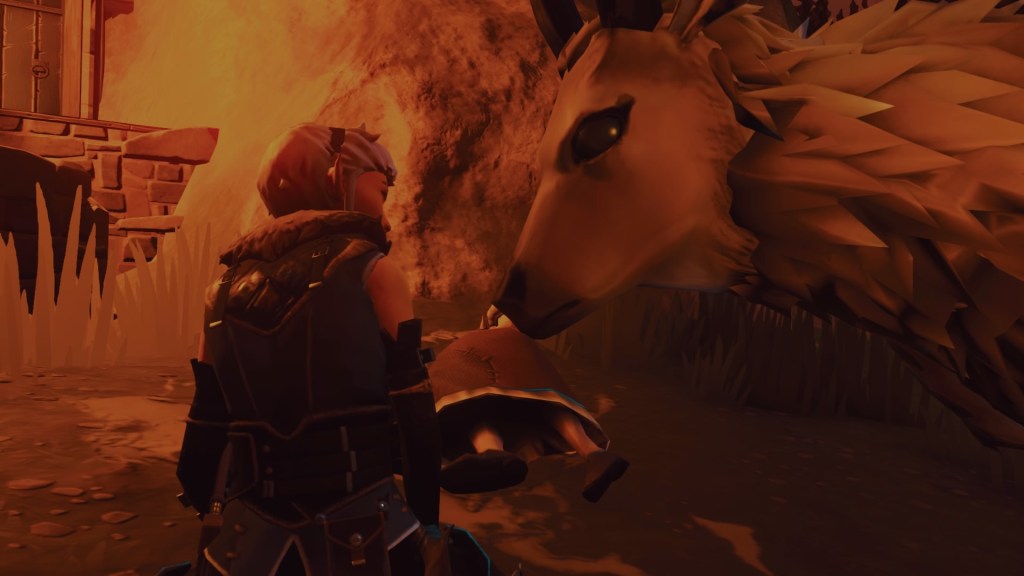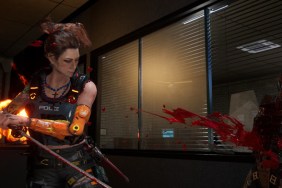For those of us who loved the Nintendo Switch’s The Legend of Zelda: Breath of the Wild, the last two years have been rough. After completing the game’s stellar campaign, it was hard not to wonder what was next for the series and even the genre as a whole. As if they were listening to our most personal thoughts, Amplify Creations has a new experience that hopes to answer this question: Decay of Logos. Thematically picking up where Breath of the Wild left off, with a little bit of Souls-inspired shenanigans mixed in for agonizingly good measure, the game aspires to offer up the next great open world adventure worth exploring.
Snakebit From the Jump
Before we get too far into the review, I would like to offer up a bit of a sneak peek behind the curtain. At some point last week, we were informed that our review code for Decay of Logos was not only a hot glitchy mess, but for some reason it was a build from over two months ago. How a version of the game so ancient (in tech time, anyway) went out to critics is a bit beyond me, but gaffes like this do happen from time-to-time. Given that I was already facing a ton of difficulties with the initial broken build we were provided, I waited for their first major patch that was supposed to iron out a vast majority of the title’s issues. Spoiler alert: It didn’t. While the experience was slightly improved after the update, with malfunctions like texture pop-in becoming less prevalent and full-on game crashes being slightly diminished, this was far from a silver bullet. Now with that out of the way, on with the savaging!
I feel like Decay of Logos really could’ve been titled, “Afterthought: The Game.” It feels like damn-near any experience that the development team was attempting to deliver is constantly being underscored by the sheer lack of proper execution. The cinematic intro is just the first in a long line of examples of this phenomenon in action. Players take control of an androgynous-designed character named Ada. With zero context whatsoever, the protagonist starts the game by walking through a village that is already in flames, then stopping to kneel next to the charred husks of what are presumably people. Who are these people? Were they your family? Friends? Co-workers? Who fucking knows? While there appears to be some sort of anguish expressed by the character model, it’s hard to become invested in strife when no background is provided, whatsoever. Hell, for all we know, Ada could have intentionally lit the blaze!
With very little information being provided it was hard to take this moment of torment seriously. This in-turn neutered the introduction of the companion creature, which is an albino elk of some sort. While once again never explaining the connection between these two, the mismatched duo sets off on an adventure. It’s impossible to understand what the crux of this expedition is, considering that the player is provided with virtually no motivation. The closest I could find to a mission objective is the mandate to simply survive. Beyond that, everything else is a loosely constructed collection of scenarios, hell-bent on brutalizing Ada to no end.
As you begin to explore the surrounding world, there’s initially the impression of a sprawling map, just waiting to be uncovered. While this scope is true to some extent, in execution, a vast majority of the game feels like it’s funneling players through a curated series of battle rooms, with very clearly-defined invisible walls. Each new arena introduces a new adversary or two, but you better get used to these fresh creatures, because they’re all you’ll be fighting for the foreseeable future.
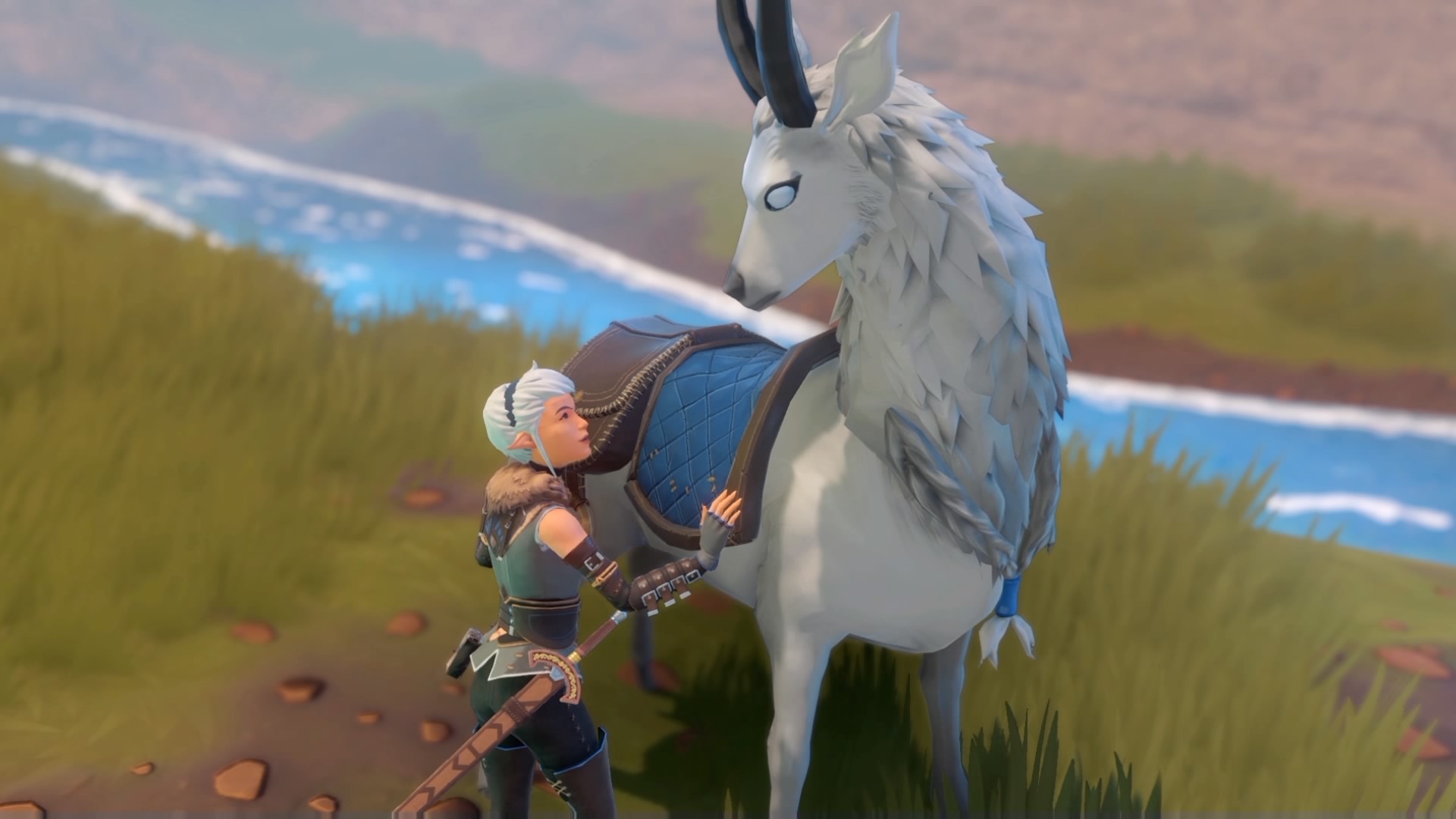
Wash. Rinse. Repeat.
The sheer lack of enemy variety is a strong point of contention throughout the roughly ten-hour campaign. Once you’ve grasped the combatant’s weaknesses and tactics, expect to repeat the same tortuous encounter time-after-time. Leveling up only results in an enemy’s HP bar becoming even more stingy, as opposed to introducing an enhanced ability or, god forbid, new-fangled combat tactics. Keeping in line with the theme of game, it feels like each character model was designed to be a relative one-trick-pony that never progressed beyond an initial design pass.
At least at first, new monsters roaming the map are something to be excited about. Sure, these beasts are designed to tear off your head and defecate down your larynx, but what else would you expect from a Souls-like experience? Only through being force-fed your teeth will the trick to slaying these creatures come to light.
It certainly doesn’t help matters much when the punishment for death is to even further chip away at the integrity of the player’s abilities. That’s right. Upon demise, the player respawns at the last base they visited, with all of their skills slightly diminished. All it takes is a few consecutive ill-timed combat encounters and suddenly stout defenses and sterling offenses will be reduced to an under-powered, hapless mess. These core power levels will only be restored by resting for the night. However, during this period the player is also vulnerable to late-night ambushes. Even if you survive until sunrise, all of the enemies that had been previously cleared are once again back to their post.
Missing the Target
What I found to be the most irritating aspect of this experience wasn’t ever the fact that I would lose a battle. In fact, I openly welcomed demise if it was due to something stupid that I’d done. The problem was this felt like it was rarely the case. Death usually boiled down to the janky combat mechanics becoming more of a hindrance than the enemies themselves. For one, the parry mechanics always felt like they were lagging behind the actual button press on the controller. If you’re going to design your combat revolving around proper timing, this sort of spongy response time needs to be tightened up substantially.
Additionally, trying to keep the camera in a sane position during battle was like attempting to wrestle a grizzly bear with a steak hanging from your neck. It never seemed to work properly and more-often-than-not, resulted in camera angles that were somehow positioned behind the character model that was being attacked. This was only exacerbated when trying to square up and launch a solid attack, which ultimately felt like participating in the world’s least-effective slap-fight. It was infuriating to say the very least.
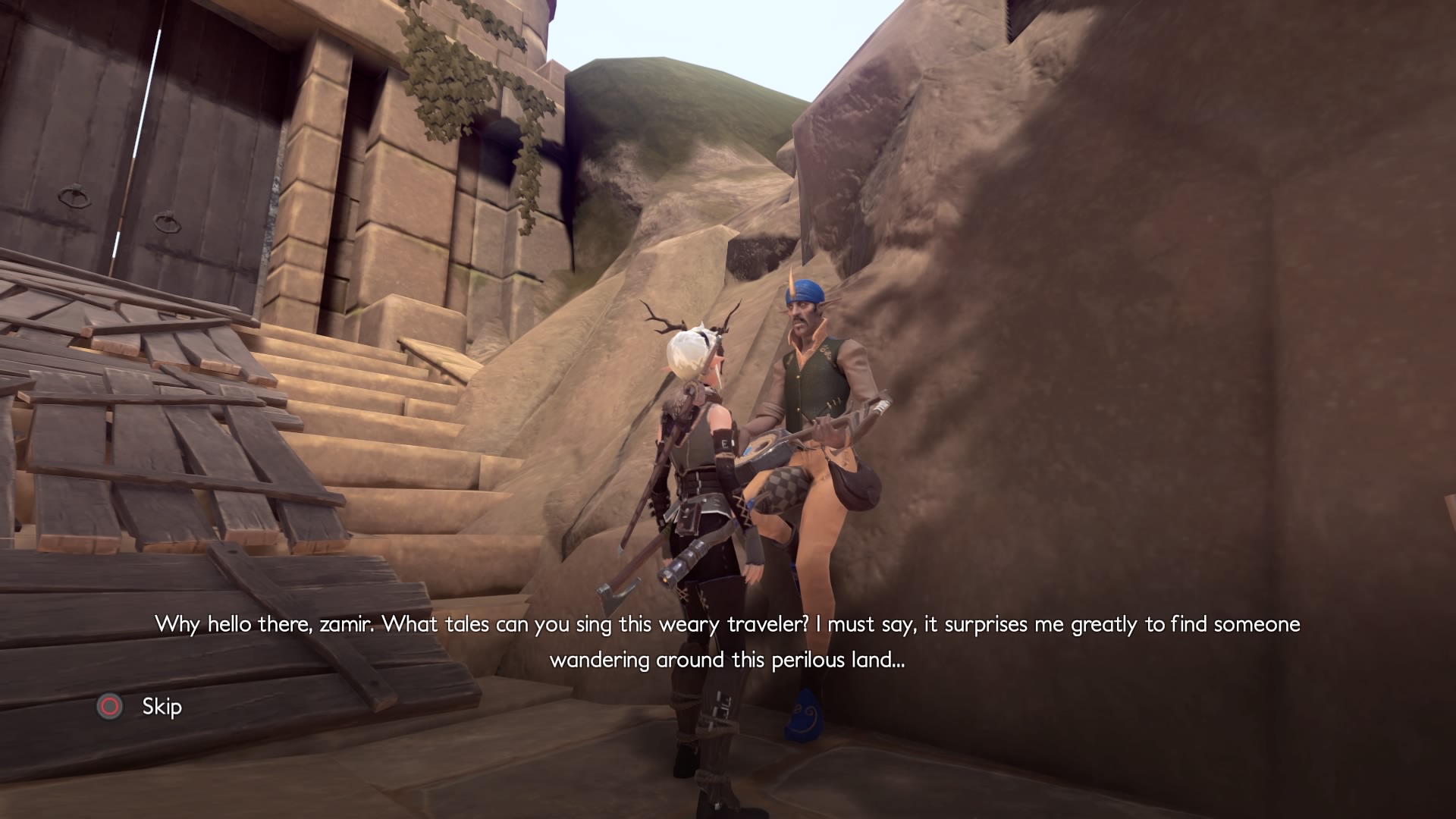
And where was your friendly neighborhood elk buddy during all of these misadventures? Instead of being your constant companion, it was likely stuck on some poorly considered environmental object. The game constantly impresses upon the character the need to foster a bond with this proverbial partner in crime. Yet whenever I attempted to have it carry items, they would begin to slowly disappear from the inventory. I can only assume this was just another of the Decay of Logos’ laundry list of defects. And don’t even get me started on trying to ride that useless beast. Regardless of how much of a bond I attempted to construct, trying to ride the quasi-domesticated quadruped was akin to wading though a pool of freshly solidified Jell-O. No matter where you wanted it to go, it would saunter aimlessly in the general vicinity being directed, but nothing more.
The one thing that Decay of Logos does better than most games I’ve played recently is the environmental storytelling. While there are some NPC characters that will verbally converse with Ada, the vast majority of the environmental art design told a more cohesive story than what could be communicated in several minutes of dialog. If the major set pieces manage to render correctly (more on that later) it’s the one example where the player is provided with an actual reason to explore, beyond latent masochism. These expressive locales are easily the highlight of this otherwise abysmal experience.
Going to Pieces
I’ve vaguely referred to the numerous bugs that I found while reviewing this title, but now it’s time to dig into this a bit more. Before we get too far into this section it’s important to note that these are all issues that were encountered after the initial patch was applied. Have you ever had the pleasure of having your game crash, simply because you paused it? For some god-forsaken reason, Logos has chronic issues when returning to gameplay from a stopped state. It wasn’t out of the question for the game to either freeze for extended periods when returning or straight-up crash the entire application.
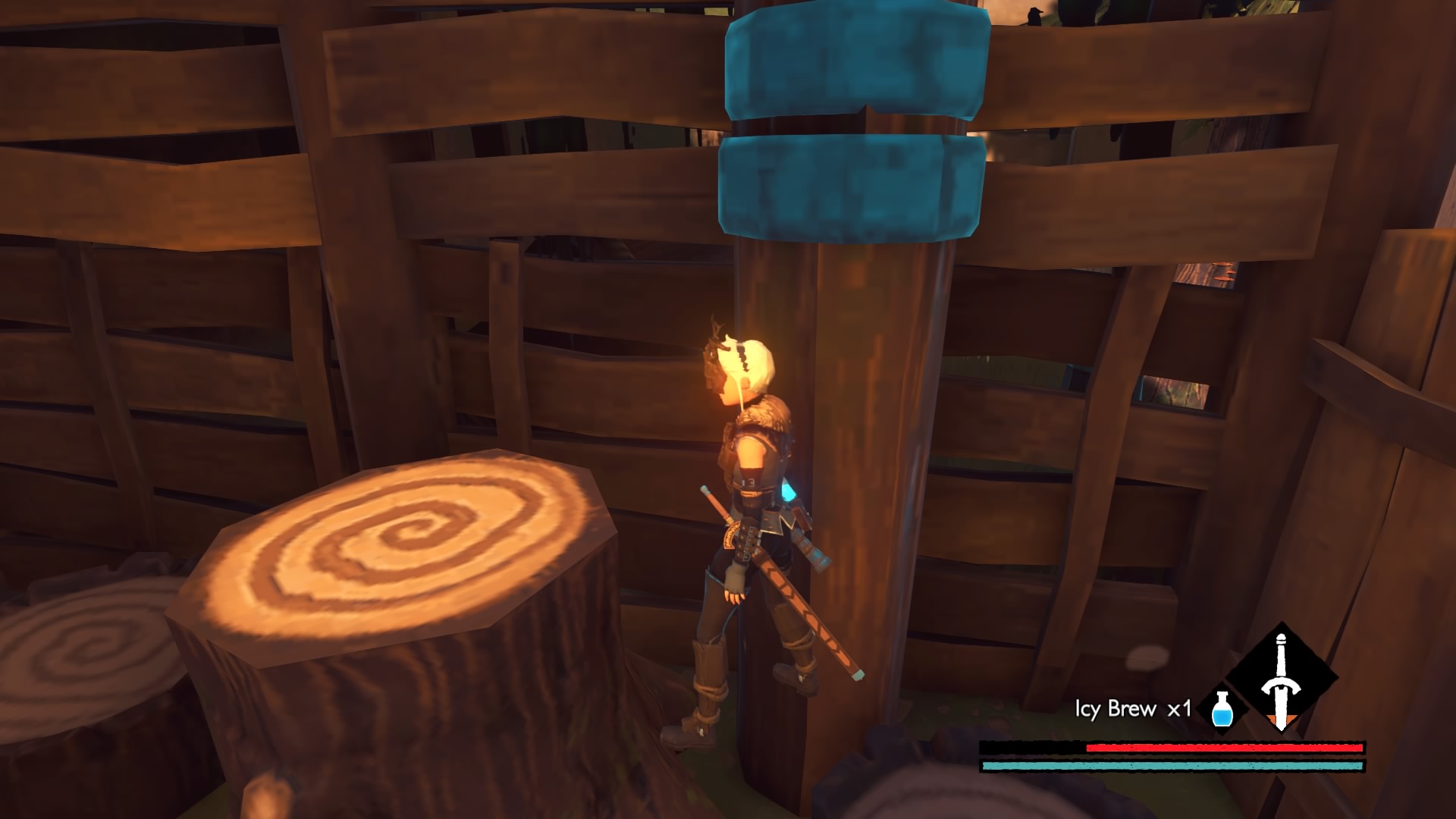
Remember how I referred to the rendering of the impressive environmental structures? It certainly seems like there are serious issues rendering these locations in real time. And god help your poor soul if you’re running during these loading sequences. Walls, ceilings, textures and even the floor occasionally had issues being drawn in a timely manner. In another “fun” occurrence, I walked through a door, only to find no floor on the other side. Trust me when I say that a never-ending fall into oblivion is never a way you want to die.
It’s these simple fundamental components of a game’s construction that seem to have been somehow missed along the way. Sure, there were questionable decisions made when it came to the core gameplay mechanics, but getting a functional title out the door should still be the biggest priority of the development team. It doesn’t seem like they’ve even cleared this hurdle as of yet.
There’s still plenty of room for Decay of Logos to mature into a quality experience. However, it’s hard to shake the feeling that with these many issues, it had no business being released at this point in time. Through diligent work and keeping a keen ear to the community, these missteps can be overcome. But really, the paying audience shouldn’t have to be your QA team. Unless you are fond of the “early access” style of unpolished releases, you should absolutely steer clear of this cataclysmic clusterfuck.
Decay of Logos review code provided by publisher. Reviewed on PS4. For more information on scoring, please read our Review Policy.
-
The art style feels like something you'd want to explore
-
Environmental storytelling is far more effective than any dialog could convey
-
Buggy controls
-
Buggy pause functionality
-
Buggy map rendering
-
Did I mention there were bugs?
-
Poor combat design
-
Vague storytelling
-
The game just ins't functional
